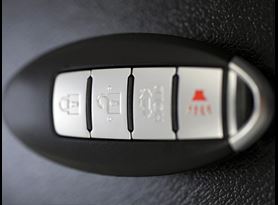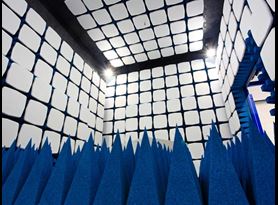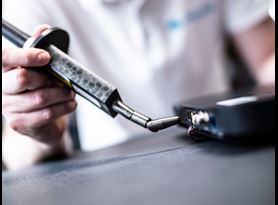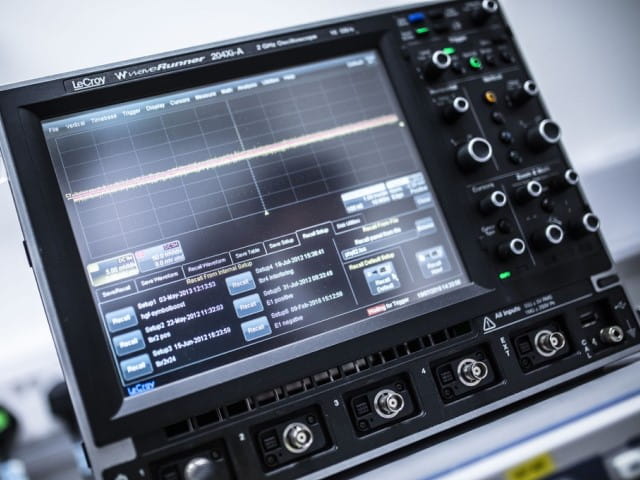How to Ensure Regulatory Compliance for your Electronic and Radio Products

By Engaged Expert
Michael DerbyMichael Derby has been in the product development and approvals business for more than 35 years. His present area of expertise is helping manufacturers get radio equipment onto the market.
Before any digital electronic or radio-enabled product can be placed on the market, it must be assessed to ensure it meets the relevant regulatory compliance requirements. These requirements vary per region but may include topics such as product safety, electromagnetic compatibility (EMC), radio performance, radio system efficiency, and interoperation with other services.
How to ensure regulatory compliance?
The product development phase can include practical testing and evaluations to gain insight into the product and how it behaves, whereas regulatory compliance assessments are typically carried out in very specific ways to meet clearly defined assessment criteria. The most common approach for regulatory approval assessments is to test precisely to a clearly defined method in a test standard.
As everything is so clearly defined for regulatory approval, it can appear to the manufacturer that there is very little room for risk. However, there are still choices and decisions to be made, and with that comes risk.
Understanding that risk, and mitigating it as much as possible, will ensure a smoother, faster, and frequently more cost-effective compliance journey. Too often, compliance testing is not considered until late in the development cycle, when in fact we see the most successful manufacturers think about the risks and responsibilities at the regulatory compliance stage, from the product’s inception.
Faults and product failures are inadvertently designed into a product; they don’t just happen by accident. A product failing a regulatory compliance test is rarely down to chance. For example, if a product goes into an unsafe mode or causes interference with another product, the combination of events that allowed it to happen has usually been designed, albeit unintentionally, into the product. If that product fails a particular test and is then tested again, in the same environment and to the same test parameters, it will generally fail again.
Knowing a product well enough to identify and anticipate such conditions in order to resolve them is a major benefit for manufacturers, and typically comes about through testing early in the product’s development.
Managing risk under the EU’s Radio Equipment Directive 2014/53/EU (RED)
To place radio equipment on the market in the EU, the RED directive must be applied, and a technical assessment is required. The most common route involves testing published standards. Based on the test results and other factors, the manufacturer completes their other obligations within the RED and decides if they have enough evidence to sign a Declaration of Conformity (DoC) and CE mark their equipment.
Part of the decision process is the analysis of the risks associated with the equipment, and the compliance process. This process must be documented by the manufacturer and is known as the compliance risk assessment.
The manufacturer’s risk assessment must be held as part of the technical documentation and be readily available to show to a market surveillance authority if requested, or to an EU Notified Body if the manufacturer requires an EU Type Examination Certificate. Simply put, it is an explanation of what choices the manufacturer made, what assessment has been performed, and how the manufacturer reached the decision to CE mark their equipment.
If the manufacturer records these steps as they move through their compliance journey, the creation of the risk assessment is a comparatively straightforward process and can be a helpful tool for project planning. It should cover topics such as the selection of test standards, but also issues such as how the equipment was operated during testing, the ports enabled and connected, modes, cable types, peripherals, EMC immunity monitoring, and much more.
The process of creating the risk assessment will likely make the manufacturer aware of how many decisions, and therefore risks, they are taking. Every non-tested mode or condition is, after all, a risk.
In addition, there are criteria that must comply with the EU Radio Equipment Directive and yet are not part of the essential test suites. Therefore, the manufacturer is expected to have confidence that their equipment meets those requirements through their own understanding of their product.
If the manufacturer has used any standards not listed on the Official Journal of Harmonised Standards for the Directive, the risk assessment will be used to explain why the manufacturer chose that standard.
Regulatory compliance and the Federal Communication Commission (FCC)
To place digital electronic or radio equipment on the market in the USA, the rules and regulations of the FCC must be met, and testing is a mandatory step in that process. Compliance with the testing is a necessary step in the authorization procedure, regardless of whether it is based on the supplier’s Declaration of Conformity (sDoC) or Certification.
Authorization by Certification means that the test reports will be scrutinized by a telecommunication certification body (TCB), and authorization by sDoC means that the manufacturer signs the test report and takes responsibility for acceptance.
Whilst the tests mandated by the FCC are very clear and specific, the manufacturer is expected to test the product in its worst-case mode, worst configuration, and worst-case condition. This means taking the responsibility, and its associated risk, in choosing the worst-case set of criteria. While the testing process may be very clearly defined in the standards, there are still choices to be made when preparing to test, such as cables, modes, and samples.
Successful manufacturers frequently screen for high-power samples and worst-case units from their production line. Put simply, the manufacturer is expected to know every detail of their product and how it works, and they may need to work with the test laboratory to establish that.
As with the EU, there are criteria that must comply with the FCC rules and yet are not part of the mandatory testing. The manufacturer is therefore expected to have confidence that their equipment meets those requirements through their own understanding of the product.
When submitting an application for certification to a TCB, the rules are clear on what should be provided. A TCB’s role is to check everything has been carried out correctly, without deviation from the FCC’s rules and specified standards.
The manufacturer’s partnership with the TCB is an important one, with the manufacturer relying on the TCB to spot any critical errors. The more information the manufacturer shares with their TCB, the more likely it will result in a fully compliant end product reaching the market quickly.
Risks associated with the use of radio modules
The FCC has a ‘modular approval’ process, such that a radio module manufacturer can certify a transmitter specifically for use in other equipment. Any company installing the module into their own equipment should therefore not need to perform the certification, although they do need to perform testing on the final product with the module installed.
When installing a certified radio module into a host product for FCC compliance, there is not a definitive list of tests that must be performed. The manufacturer is expected to repeat any tests that could have been affected by the installation of the module into the host. These are the manufacturer’s decisions and risks. A test laboratory may provide advice, but ultimately the manufacturer will decide which tests to perform.
There is no product certification process for radio equipment in the EU and therefore there is no modular approval process under the RED. A manufacturer incorporating a radio module into their product becomes fully responsible for all aspects of the end product and for the full technical assessment of the final radio equipment. However, many manufacturers decide to adopt some test results from the radio module and, just as with the USA, there is not a definitive list of test cases which do, or do not, need to be performed.
The key requirement is for the manufacturer to have confidence in compliance. In practical terms, this means performing all the safety, EMC, and radiated radio tests on the final product, but maybe spot-checking some conducted radio test cases. Once again, whilst the test laboratory can provide advice, the manufacturer takes ownership and full responsibility.
This can be an obvious area of risk as a manufacturer choosing to accept conducted test results from the module’s test report will have had no control over how that testing was performed. It becomes even more complicated when a manufacturer puts multiple radios into a product, due to their potential to interfere with each other.
A radio module is typically tested as a stand-alone in an electrically quiet environment. Combining modules into the noisy electronic environment of a host product alongside other radios will inevitably affect receiver performance. This makes it harder for the final product manufacturer to know if the product will, if tested, comply with all the necessary requirements, based only on the evidence of the original module test reports.
Ensuring you have all the required regulatory and contractual compliance evidence
The critical goal of a manufacturer is to get a product to market as quickly and efficiently as possible. This means ensuring a compliant product and undertaking the necessary assessments or testing to demonstrate that compliance. This isn’t as simple as ensuring specific tests are completed but rather comes down to knowing your product and understanding its intended operation, environment for use, intended users, and reasonably foreseen use.
It is not simply a case of saying “what tests must I perform?". Instead, manufacturers should ask themselves “what tests should I perform?”. Most likely this will be a combination of the minimum mandatory test cases, and any additional testing necessary to understand the product and mitigate the risks of non-compliance.
Many manufacturers are now producing products that they may not have originally considered to be radio products but will be classed as such when it comes to testing and approvals. This frequently means they are not prepared for the level of testing, assessment, and investigations involved.
Three of the most common mistakes that Element sees are a lack of planning, not starting to plan early enough, and a lack of pre-testing. Another common mistake relates to the choice of test sample. It is always recommended to identify and test the worst sample, as the manufacturer needs to know their production line samples will not be of inferior quality to the sample tested.
Choosing a perfect sample for the test laboratory in the hope that the product will pass the tests trouble-free only increases the potential for the product to perform badly or encounter failures when it reaches the marketplace.
How Element can help
Element can support you throughout the entire radio compliance testing process, from the initial stages of identifying a suitable compliance strategy through comprehensive testing programs, certification, and Global Market Access (GMA). Element also provides extensive EMC and electrical product safety testing services, ensuring you have all the required regulatory and contractual compliance evidence you might need. To learn more about testing your device for radio approval, please contact us here.
Find related Resources
Related Services

Radio Testing
Element provides a wide range of wireless and radio testing services including RF testing for regulatory compliance, RF exposure and SAR assessments and OTA and Wireless Coexistence testing.

Wireless Device - Radio Testing and Certification Services
Element provides a full suite of wireless and radio testing, certification and approvals services for markets around the world.

EMC Testing
Element is one of the largest independent EMC testing companies in the world. Find out about our comprehensive testing capabilities in the UK, Germany, US and Korea.

Electrical Product Safety Standards
Read our article to understand the testing and certification process and some of the more common pitfalls of safety and electrical products


